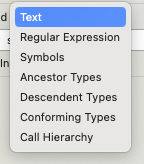

Dude has reverse engineered pretty much the entire hardware stack of Macs to be able to provide the global community with Asahi, but because he says something you disagree with he’s supposedly “uninformed”.
Talk about childish…
Indie iOS app developer with a passion for SwiftUI


Dude has reverse engineered pretty much the entire hardware stack of Macs to be able to provide the global community with Asahi, but because he says something you disagree with he’s supposedly “uninformed”.
Talk about childish…


Good for them, but this whole clickbait nonsense about Apple “locking” things is just that, nonsense.
Hector Martin, creator of Asahi Linux said it best so instead of repeating his words I’ll just leave a link to his comments on the matter: https://social.treehouse.systems/@marcan/110803356645502548
You’re right that a lot of Terms of Service documents and similar agreement documents have language that reserves the right to modify those terms.
At the same time just because something is in the terms doesn’t mean it can stand the test of adjudication and terms as well as changes are often challenged in court with success.
Unity is in a particular tricky situation because the clause that governed modifications in their last ToS explicitly gives the user the option to pass on modifications that adversely affects them and stick with the old terms:
Unity may update these Unity Software Additional Terms at any time for any reason and without notice (the “Updated Terms”) and those Updated Terms will apply to the most recent current-year version of the Unity Software, provided that, if the Updated Terms adversely impact your rights, you may elect to continue to use any current-year versions of the Unity Software (e.g., 2018.x and 2018.y and any Long Term Supported (LTS) versions for that current-year release) according to the terms that applied just prior to the Updated Terms (the “Prior Terms”). The Updated Terms will then not apply to your use of those current-year versions unless and until you update to a subsequent year version of the Unity Software (e.g. from 2019.4 to 2020.1). If material modifications are made to these Terms, Unity will endeavor to notify you of the modification. If a modification is required to comply with applicable law, the modification will apply notwithstanding this section. Except as explicitly set forth in this paragraph, your use of any new version or release of the Unity Software will be subject to the Updated Terms applicable to that release or version. You understand that it is your responsibility to maintain complete records establishing your entitlement to Prior Terms.


You can still do this if you use https://www.shodan.io/
It’ll let you find IoT devices and cameras connected to the internet if you know what to search for and an alarming amount of them are locked behind an admin/admin login.
I advise against nosying around because there’s a near 100% chance that it’s illegal to do so in your jurisdiction.
Oh wow, they really closed it down huh?
Not too long ago you were able to change it.
This dumbing things down to prevent customers from fucking themselves over and using up CS resources is getting ridiculous.
Say you need to change some settings but your modem/router isn’t online then you’re SOOL.
Cox, who uses the same gateway, is even worse. They won’t even allow you to enable legacy mode (802.11b) for IoT devices that cheaped out on WiFi cards, not even on a separate network and their customer service can’t enable it either.
I dread moving into a Cox region where there’s no fiber competitor available.


Cue the nuclear shills that will handwave away any legitimate concern with wishful thinking and frame the discussion as solely pro/anti fossil, conveniently pretending that renewables don’t exist.
ETA:
Let’s look at some great examples of handwaving and other nonsense to further the nuclear agenda.
Here @danielbln@lemmy.world brings up a legitimate concern about companies not adhering to regulation and regulators being corrupt/bought *cough… Three Mile Island cough*, and how to deal with that:
So uh, turns out the energy companies are not exactly the most moral and rule abiding entities, and they love to pay off politicians and cut corners. How does one prevent that, as in the case of fission it has rather dire consequences?
So of course the answer to that by @Carighan@lemmy.world is a slippery slope argument and equating a hypothetical disaster with thousands if not millions of victims and areas being uninhabitable for years to come, with the death of a family member due to faulty wiring in your home:
Since you can apply that logic to everything, how can you ever build anything? Because all consequences are dire on a myopic scale, that is, if your partner dies because a single electrician cheaped out with the wiring in your building and got someone to sign off, “It’s not as bad as a nuclear disaster” isn’t exactly going to console them much.
At some point, you need to accept that making something illegal and trying to prosecute people has to be enough. For most situations. It’s not perfect. Sure. But nothing ever is. And no solution to energy is ever going to be perfect, either.
Then there’s the matter of misleading statistics and graphs.
Never mind the fact that the amount of victims of nuclear disasters is underreported, under-attributed and research is hampered if not outright blocked to further a nuclear agenda, also never mind that the risks are consistently underreported, lets leave those contentious points behind and look at what’s at hand.
Here @JohnDClay@sh.itjust.works shows a graph from Our World in Data that is often thrown around and claims to show “Death rates by unit of electricity production”:

Seems shocking enough and I’m sure in rough lines, the proportions respective to one another make sense to some degree or another.
The problem however is that the source data is thrown together in such a way that it completely undermines the message the graph is trying to portray.
According to Our World in Data this is the source of the data used in the graph:
Death rates from energy production is measured as the number of deaths by energy source per terawatt-hour (TWh) of electricity production.
Data on death rates from fossil fuels is sourced from Markandya, A., & Wilkinson, P. (2007).
Data on death rates from solar and wind is sourced from Sovacool et al. (2016) based on a database of accidents from these sources.
We estimate deaths rates for nuclear energy based on the latest death toll figures from Chernobyl and Fukushima as described in our article here: https://ourworldindata.org/what-was-the-death-toll-from-chernobyl-and-fukushima
We estimate death rates from hydropower based on an updated list of historical hydropower accidents, dating back to 1965, sourced primarily from the underlying database included in Sovacool et al. (2016). For more information, see our article: https://ourworldindata.org/safest-sources-of-energy
Fossil fuel numbers are based on this paper which starts out by described a pro-nuclear stance, but more importantly, does a lot of educated guesstimating on the air-pollution related death numbers that is straight up copied into the graph.
Sovacool is used for solar and wind, but doesn’t have those estimates and is mainly limited to direct victims.
Nuclear based deaths is based on Our World in Data’s own nuclear propaganda piece that mainly focuses on direct deaths and severely underplays non-direct deaths.
And hydropower bases deaths is based on accidents.
So they mix and match all kinds of different forms of data to make this graph, which is a no-no. Either you stick to only accidents, only direct deaths or do all possible deaths that is possibly caused by an energy source, like they do for fossil fuels.
Not doing so makes the graph seem like some kind of joke.


Most doxxers don’t technically release the information, rather they’ve acquired it and point others to where they’ve acquired it or simply disseminate it further.


That’s what I’m saying. In most cases the doxxer isn’t the one who originally provided the info, but rather someone who has found the information online via a Google search or something similar.
Only if there’s a risk at incriminating yourself, and if it’s not immediately apparent how you’d run that risk (e.g. you’re a witness that doesn’t have a direct relation to the crime at hand) you’d have to motivate how it could be incriminating.


Isn’t that a little bit of circular reasoning?
If I doxx someone online then it gets indexed by Google, if someone then Google’s the information it stops being doxxing?
I’d assume most doxxing isn’t done by someone who has unique firsthand knowledge (e.g. “Oh I know John, he lives on so and so road”) and instead is done by finding the information online whether via Google or a different public source.
At least in the US, where a ridiculous amount of private information is deemed “public”.


Apologies, it seems DMs are somewhat broken. I’ve found your DM and sent you a reply.


A 100% of $0 is still $0.
There are plenty of instances that are open, but it depends on your definition of “censored” if they are what you seek.
Completely “uncensored” instances are rare if not non-existent because most instances will at least try to adhere to the laws of their jurisdiction and in addition will have some rules in place to keep things running smoothly and pleasant for everyone.
Most big instances are run from the EU so they’ll often have rules regarding hate speech.
Depending on your definition your only options might either be Japanese instances due to less strict laws around certain content or right wing instances, but both will be almost uniformly blocked on other instances.
It means no porn, how much that overlaps with anything remotely considered NSFW is up to the admin and you’d have to ask them.


Typically low level attacks such as these is where it starts because they grant access to parts that can be used to learn more about the system as a whole.
This understanding then can be used to find easier to exploit avenues.
A good example of this is the history of exploits on Nintendo hardware.
They almost all started with finding an exploit at the hardware level, which then subsequently lead to finding software exploits and ways to leverage them in an easy way for end users.


There’s not much for him to be concerned about currently, given that he is dead.
As for 16 yo Aaron who wrote that list of hot takes in order of controversy, is it really surprising that a kid that developed an opinion of free speech extremism penned that down?
Especially after being inspired by this article as per his own admission?
The article also helps provide context for the time period this was written in.
Simple possession was still a relatively novel concept and simulated CSAM wasn’t criminal yet in the US.
Don’t misconstrue my own position on the matter, I originate from, and was legally trained in, a jurisdiction that criminalizes hate speech, imposing a significantly broader limit on free speech than the US currently does, and I think that’s the better path to take.
So I personally don’t adhere to free speech extremism.
Nevertheless, while not agreeing with his take, I can see the logic that persuaded him.
It’s essentially the facetious version of “Why stop here, why not also ban hate speech/guns/drugs/etc?”
All of those can be argued to be gateways to the harm of others, perhaps even disproportionately children.
To me it reads as him challenging the logic, not condoning the outcome much less the subsequent consequences. Very edgy indeed.
As for those who bring up that he reinstated his blog multiple times and with it this particular post from when he was 16, as a way to posthumously attribute this to a more older adult version of him; I’m not sure it’s that cut and dry.
As a fundamentalist such as himself it could also just be an exhibition of his free speech extremism perhaps combined with an effort to maintain transparency.
After all, it could suggest an eroding of his beliefs on free speech if he would remove it “now” with little benefit to him since the cat’s already out of the bag, even if he disagreed with his former self at the time of restoring the blog.
A better indication of his opinions later in life would be comments that reaffirm the prior expressed beliefs or, if the suspicion is that he practiced what he preached, one would expect this to have come out during the FBI investigation, considering they went through all his data.
Do I think it’s healthy to consider him a hero, or anyone else for that matter?
No not really, if only because the likelihood of heroes having irreconcilable blemishes is extremely high just by the very virtue of their, let’s say, unique thinking producing the things we love about them but also the things that might cause pause in many.


You don’t know Some Software Corp and their world famous website somesoftwarecorp.com?


But for iOS you’re forced to use Xcode for implementing certain things like permissions, build and upload.
You can do all that via VSCode as well if you so desire.
Permissions, configurations, etc. are essentially all just XML files and can be edited as such, building, running in simulator and uploading can all be done via CLI.
And if you’re not comfortable doing it via the terminal in VSCode, you can also find some extensions.
Personally as a native dev I don’t know why you’d want to of course, but to each their own.


I think you might be misunderstanding what this does.
You did a search for symbol references that contain “User” ignoring cases.
When you do a search for symbol references this way, Xcode will return two things:
And it did just that.
The first three .swift files show references to symbols that contain “User”.
The forth one, User.swift, is in and of itself a symbol that matches the query and has symbols inside itself.
The last one UserViewModel.swift is in itself a symbol as well and all the parts that are nested within that you’ve annotated with underscores and question marks, serve to give you context about the symbol “UserViewModel”, hence the ellipses.
It’s essentially telling you “Hey I’ve found this symbol UserViewModel, it starts with a var named username, has a bunch of stuff following that (i.e. …) then has an extension, then some more stuff (i.e. …) and then ends”.
Without knowing what’s inside UserViewModel.swift I can’t tell if it goofed with giving you a typical declaration, but that doesn’t change the fact that its trying to give you context about a valid search result, the symbol UserViewModel, so that you can figure out if that’s the one you’re looking for.
Keep in mind that variables are considered symbols as well, but in this instance I don’t think that’s what happened here, otherwise it would’ve been marked with a P instead of a C.
If this is not desired behavior then I suggest you switch from “Containing” to “Matching Word” or instead consider using the search bar at the bottom of the Symbol Navigator.
Another option, if you’re searching while going through code, is to right click on the symbol in your code and click Find > Find Selected Symbol in Workspace.
Lastly it might be an idea to go over the Xcode documentation as a refresher. This would be a good starting point.
That said, Apple clearly feels that things can be improved by clarifying, because in the current Xcode beta they’ve changed the option label from References to Symbols (and added a few more options).

For one it’s just technicalities for another it’s the distinction between a company going out of their way to block repairs or a company just not caring and mainly focussing on their own repair process.